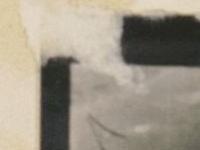The first practical airplane was invented and flown by the Wright brothers in 1903. Shortly thereafter, in 1914, World War I broke out and many nations saw this fledgling aviation technology as a potential advantage in the war. At first, airplanes were used for reconnaissance, similar to how other aircraft, namely balloons, had been used as far back as 1794 by the French, and by both sides during the American Civil War. However, later in the war, aircraft were also used in combat, and to drop bombs on enemies. Over the course of the war, aviation developed significantly into a major force that was essential to a nation’s military arsenal.
Captain Stephen H. Noyes was an aviator in the United States military during World War I. He worked on numerous reconnaissance missions in France. The purpose of these missions was to gain information about important places, highways railroads and rivers, as well as the location of enemy troops. This lesson will examine his letters, handbooks, and reconnaissance photos from this time, and students will analyze the importance and growth of technologies through WWI.




